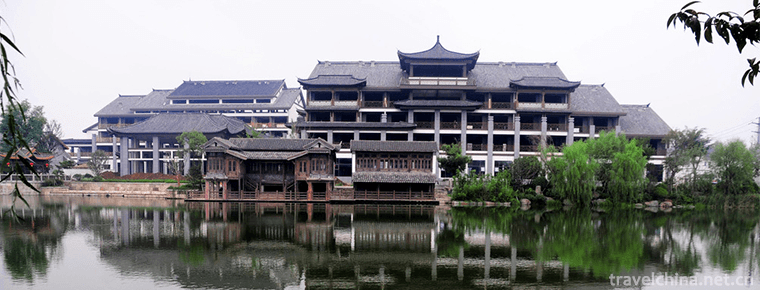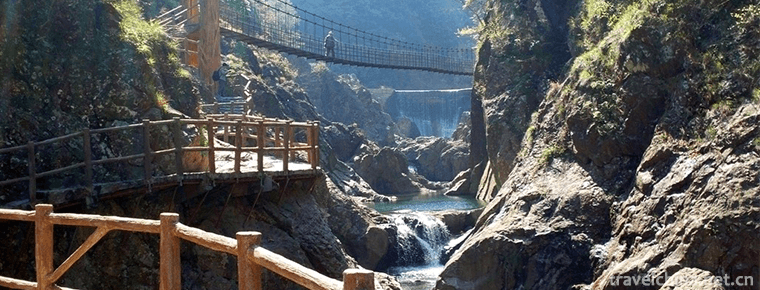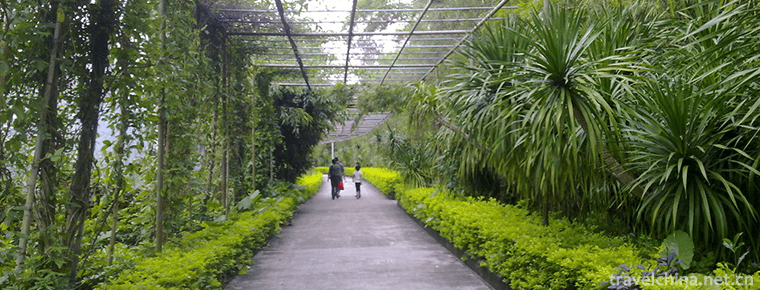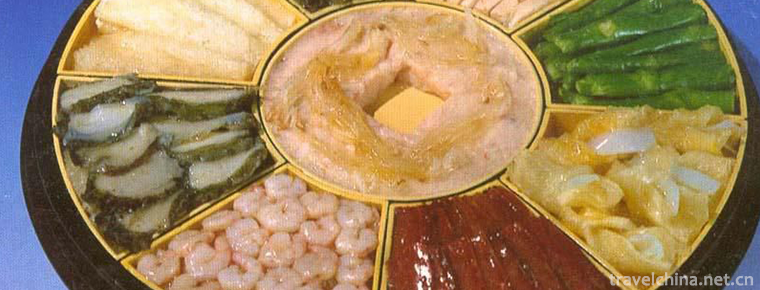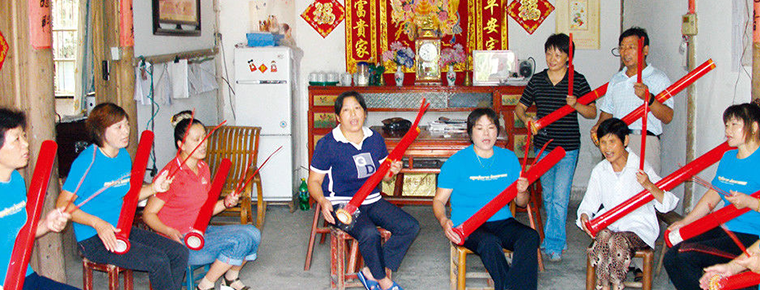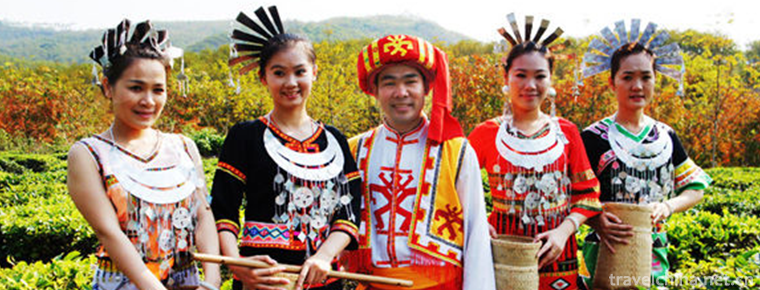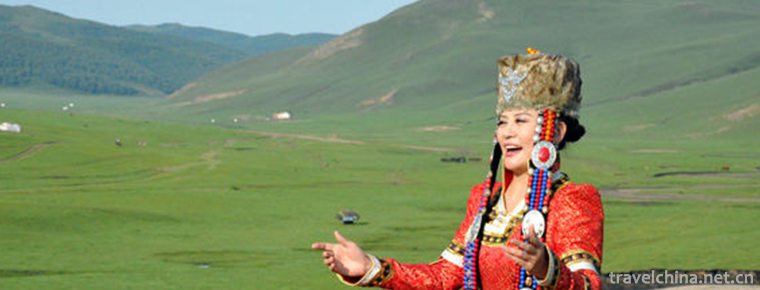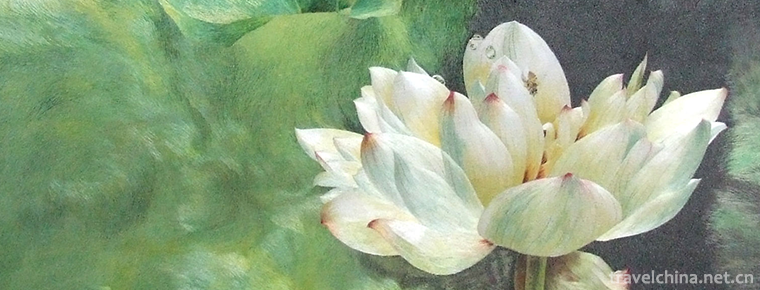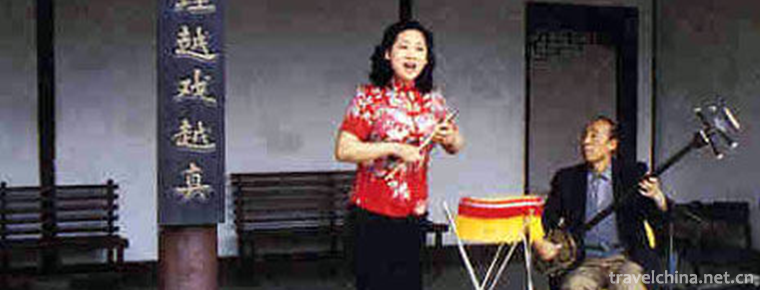Suzhou embroidery
Suzhou embroidery
Su embroidery is one of the national intangible cultural heritages of folk traditional art in Suzhou City, Jiangsu Province.
Suzhou embroidery is the general name of embroidery products in Suzhou area. Its origin is in Wuxian, Suzhou. Now it has spread all over Wuxi, Changzhou and other places. Embroidery and silkworm rearing, silk reeling inseparable, so embroidery, also known as silk embroidery. The Qing Dynasty established "Su embroidery, Hunan embroidery, Guangdong embroidery and Shu embroidery" as four famous embroidery in China. The Qing Dynasty was the heyday of Su embroidery. It was a time when schools multiplied and famous artists competed. Su embroidery has a unique style with beautiful patterns, ingenious conception, meticulous embroidery, lively stitching and elegant colors, and strong local characteristics. Su embroidery is most famous for embroidery in Zhenhu Town, a high-tech district of Suzhou Embroidery Research Institute. Zhenhu is the main birthplace of Su embroidery. Eighty percent of the products of Su embroidery come from Zhenhu.
On May 20, 2006, Su Embroidery was approved by the State Council of the People's Republic of China to be included in the first batch of national intangible cultural heritage lists with the heritage number_-18.
historical origin
Suzhou embroidery has a history of more than 2000 years. Legend has it that Zhongyong's granddaughter "Nuhong" first made embroidered clothes. Taibo and Zhongyong, the sons of the father of the ancient king of Zhou Taiwang, came to the area of Suzhou in southern Jiangsu Province to establish the Wu State. The local people have the custom of breaking off their tattoos. Zhong Yong became the king of Wu. He wanted to break this bad habit, so he consulted with the elders. Unexpectedly, their comments were heard by the granddaughter Hongnu who was sewing. She listened while sewing, distracted, accidentally, her hand was pricked by a needle, a small drop of bright red blood immediately soaked into the clothing, gradually dizzying into small flowers, so the scarlet woman had inspiration: to embroider Jiaolong's design on the clothes to replace the tattoo. In order to commemorate the inventors of embroidery, the folk still call women engaged in textile, sewing, embroidery and other activities as "Nuhong".
As early as the Three Kingdoms Period (220-280 A.D.), there were records about the production of Su embroidery. Su embroidery had a long history of thousands of years. Its style and charm had laid the foundation in Sui and Tang Dynasties. Its basic branches and characteristics had gradually formed in Song and Yuan Dynasties, and the art of Jiangsu embroidery began to mature in Ming and Qing Dynasties.
Suzhou embroidery originated in Wuxian, Suzhou, and now it has spread to Wuxi, Changzhou, Yangzhou, Suqian, Dongtai and other places in Jiangsu Province. Jiangsu is rich in land, mild climate, developed sericulture and rich in silk. It has been a beautiful place since ancient times. Superior geographical environment, gorgeous and rich brocade and colorful floral thread have created favorable conditions for the development of Su embroidery. According to Liu Xiang's Shuoyuan in the Western Han Dynasty, as early as the Spring and Autumn Period more than two thousand years ago, the State of Wu had used Su embroidery for clothing.
In the Three Kingdoms Period, Wu had been used for clothing. Sun Quan, King of Wu, once ordered Zhao Dacheng's sister to embroider the Paintings of Kingdoms by hand, and to embroider the designs of five mountains, rivers and seas, cities and battlefields on the square silk. Wang Jia of Jin Dynasty "Pick up the Remains of Wu": "Sun Quan often sighs at the Wei and Shu Dynasties, the gap between the army, think of the good painter to make Tushan and Sichuan terrain army battlefield image. Da (Zhao Da) is his sister. The envoy wrote about the trend of Jiuzhou Fangyue. The lady said,'The color of blue and blue is easy to die out and can't last forever. Concubines can embroider and make silks on the side of various countries, in the form of cities and towns on the five Yues River. Achieved, but into the Wu Lord, when people called the "needle absolute".
According to the Song Dynasty's Qing Secret Collection, "The embroidery of the Song Dynasty is delicate, with one or two threads, and with a needle as thin as hair." The color design is exquisite and brilliant. The interest of mountains and rivers is far and near. The characters with deep pavilions have a vivid look. Flowers and birds are very graceful, and the best one is better than the painting one. It can be seen that the art of Su embroidery in Song Dynasty has reached a fairly high level.
During the Ming Dynasty (1368-1644), Su embroidery had become a popular by-product in Suzhou area, forming a grand occasion of "silkworm rearing and household embroidery". Jiangnan has become the center of silk handicraft industry. In the aspect of painting art, Wumen Painting School, represented by Tang Yin (Tang Bohu) and Shen Zhou, has promoted its development. Artists combine their paintings to reproduce. The embroidered masterpieces are vivid and vivid. They are known as "painting with needles" and "skillful in nature". Since then, art has formed its own artistic style in stitching, color patterns and other aspects. It is quite beautiful in the art garden and rivals the art of calligraphy and painting.
The fifty-third chapter of A Dream of Red Mansions writes, "The original embroidered Zhanger was also a Gusu woman named Huiniang. Because she is also a family of scholarly officials, she was good at painting and calligraphy, but accidentally embroidered a needle or two to play, is not a marketable thing. All the embroidered flowers on the screen imitate the broken branches of famous families in Tang, Song, Yuan and Ming dynasties. Therefore, its format and color matching are elegant, which is not always comparable to the brilliant craftsmen; each flower side uses the old sentences of the ancients inscribing the flower, or different poems and songs, all embroidered with black velvet, and the handwriting kicks, turns, weights and breaks are the same as the brushwork. With Huiniang's embroidered jar and a turn of the pen, the artistic charm of Su embroidery was written.
Su embroidery in the Qing Dynasty (A.D. 1644-1911) was famous for its delicacy, elegance and cleanliness. At that time, Suzhou was even more famous for its embroidery market. In the middle and late Qing Dynasty, Su embroidery developed further in embroidery technology, and new exquisite "double-sided embroidery" appeared. There were 65 businessmen specializing in embroidery in Suzhou alone.
Xiyongjing's wife, Zhuge, returned in the fifteenth year of his life, and his widow and aunt were filial. Yongjingri plays the Zhouyi. He embroiders the Nine Palaces and Eight Diagrams in the Tuluo Book. The longitude and latitude are delicate and compact. The Qing Dynasty was the heyday of Su embroidery. It was a time when schools multiplied and celebrities competed. The royal family enjoyed a great deal of goods, almost entirely from artists. Folk is more colorful, widely used in costumes, costumes, quilts, pillow bags, curtains, cushions, upper, sachets, fan bags and so on. These Su embroidery household goods are not only diversified in stitching, exquisite in embroidery and elegant in color matching, but also have the meanings of celebration, longevity and auspiciousness, which are deeply loved by the masses. There is also a kind of "painting embroidery", which belongs to high-grade appreciation, called "boudoir embroidery". Historically, Qian Hui, Cao Moqin, Yang Maojun, Shen Guanguanguan, Ding Pei and Xue Wenhua of Wuxi are all well-known works.
Especially at the end of the Qing Dynasty and the beginning of the Republic of China, in the trend of Western learning flowing eastward, Su embroidery also showed signs of innovation. During Guangxu's reign, Shen Yunzhi, a skilled artist, was well-known in Suzhou embroidery circle. She integrated the characteristics of Xiao Shen's simulation of Western paintings into embroidery and created a new "simulation embroidery". In the 30th year of Guangxu (1904 AD), on the 70th birthday of Cixi, Shen Yunzhi embroidered eight works such as Buddha statues to celebrate his birthday. Cixi Bei appreciated it, wrote the words "longevity" and "happiness", and gave Shen Yunzhi and her husband rest. Since then, Shen Yunzhi renamed Shen Shou, and later her work "The Italian Queen Elena", which was presented to Italy as a national gift, has stirred up the Italian government. The image of Jesus won the first prize at the Panama-Pacific International Exposition held in 1915 in the United States, with a price of up to 13,000 dollars. When the American Woman Volbeck was exhibited in the United States, its grandeur was unprecedented. Shen Shou's "simulated embroidery" has a good reputation both at home and abroad, and has opened up a brand new page of Su embroidery. Under her advocacy, Suzhou, Nantong, Danyang, Wuxi, Changshu and other places in Jiangsu Province have respectively organized institutes, embroidery engineering, embroidery trade unions and so on. She has been to Suzhou, Beijing, Tianjin, Nantong and other places to teach apprenticeship, training a generation of new people. At that time, artists also included Hua Ji, Tang Yizhen, Li Pei-ming, Cai Qunxiu, Zhang Yingxiu and Jin Jingfen. Their works have won prizes at the Durang World Exposition of Italy (1911), Panama-Pacific International Exposition (1915), Belgium World Exposition (1930), and won international honors for the traditional crafts of the Chinese nation. In the early 1930s, Yang Shouyu, director of embroidery engineering in Danyang Regular Female Vocational College, created the "random embroidery" with crossing lengths, different lengths and overlapping layers, which enriched and improved the expressive ability of Su embroidery art.
Since the early 1950s, artists'creation has opened up a new vast world. Suzhou, Nantong, Changzhou, Wuxi, Yangzhou, Dongtai and other places have established research institutions or factories, so that artists can concentrate on research and creation. The lost skills were excavated, summarized, improved and developed to make the ancient Su embroidery art shine again. The Su Embroidery Museum of China was built in 1986.
As a whole, the embroidery industry in the Republic of China declined for a time due to the perennial war.
After the founding of the People's Republic of China, Su embroidery has been further restored and developed. Since 1950, the State has set up the Suzhou Embroidery Research Institute and set up embroidery training courses. Su embroidery has developed from 18 kinds to more than 40 kinds today. At the end of the 19th century, Shen Shou, a master of embroidery, inherited the tradition, absorbed the essence of Western painting and created "simulation embroidery". In the 1930s, Yang Shouyu broke through the tradition and invented "random embroidery". In 1958, with solid sketch skills and skilled needle embroidery skills, Ren Jialei created the "virtual and real chaotic embroidery". Ren Mu-lei's first embroidery work, Lenin's Thoracic Portrait, is based on the color of embroidery fabrics. It uses the techniques of combination of thick and thin, virtual and real arrangement and empty space to express rich pictures. The lines are relaxed and lively, the needles do not show traces, the colors are concise, the overall feeling is strong, and the characters are vividly expressed. At the National Embroidery Quality Assessment Conference, this work was designated as the "Quality Standard of Portrait Embroidery", and later won a gold medal at the Exhibition of Chinese Masters of Arts and Crafts held in Shanghai. It is now in the collection of Jiangsu Museum of Art.
After more than two thousand years of development, Su embroidery has formed an independent embroidery style. However, with the continuous progress of the times, art also needs to keep pace with the times. Faced with various new situations, Su embroidery enterprises have reformed one after another, and put forward the idea of commercialization of Su embroidery gifts and design of Su embroidery home decoration, so that the traditional folk Su embroidery technology is no longer luxurious, but into thousands of households. Individualized tailor-made, so that Su embroidery is no longer limited to the old model, but too much integration into the buyer's ideas and concepts, through the simple Suzhou embroidery Niang pure manual embroidery. Let Su embroidery not only be art, but also more permeate into the human taste.
Suzhou embroidery originated in Wuxian, Suzhou. As early as the Spring and Autumn Period, Wu State had used embroidery for clothing. By the Ming Dynasty, Jiangnan had become the center of silk handicraft industry. In the field of painting art, Wumen School, represented by Tang Yin (Bohu) and Shen Zhou, promoted the development of embroidery. Embroidery artists reproduce their paintings with vivid and vivid embroidery works, which are known as "painting with needles" and "skillful work". Since then, embroidery art has formed its own artistic style in needling, color patterns and other aspects. It is very beautiful in the art garden and rivals the art of calligraphy and painting.
The Qing Dynasty was the heyday of Su embroidery. After liberation, Su embroidery had a great development. It can be said that schools multiplied, famous artists competed and the theme was broad. The large amount of embroidery enjoyed by the royal family in the past was almost entirely from the hands of Su embroidery artists. Varieties of embroidery are complete: according to varieties, there are double-sided embroidery and single-sided embroidery; according to volume, there are tables, wall screens, floor screens and large composite screens; according to performance content, there are characters, pets, flowers and birds, scenery, still life, characteristic buildings, etc.
Cultural characteristics
Artistic Characteristics
Su embroidery has a long history. Su embroidery classical burdens were unearthed from Ruiguang Pagoda and Huqiu Pagoda in Suzhou during the Five Dynasties and the Northern Song Dynasty. They can be used to lay needles and apply needles in a flat way. This is the earliest material object of Su embroidery found at present. According to the relevant historical records, since the Song Dynasty, Suzhou embroidery technology is very prosperous, the craft is also maturing. In rural areas, "silkworm rearing at home, household embroidery", embroidery lanes, rolling embroidery fang, embroidery fang, embroidery lane and other lanes also appeared in the city, which shows the prosperity of Suzhou embroidery. At that time, not only embroidery was used for living, but also rich ladies often used it to amuse time and cultivate temperament. The so-called "folk embroidery", "boudoir embroidery" and "court embroidery" came from it.
In Qing Dynasty, Suzhou embroidery was unprecedented. Suzhou was known as "embroidery city" and was famous all over the world. At that time, there were many stitches and their wide application did not exceed the previous dynasty. Landscapes, pavilions, flowers, birds and figures were omnipotent and omnipotent. With the great need of the court, luxurious embroidery emerged in endlessly. Su embroidery later absorbed the characteristics of "Gu embroidery" and Western paintings in Shanghai, creating a style with strong light and shade and full of three-dimensional sense.
Su embroidery has a unique style with beautiful patterns, ingenious conception, meticulous embroidery, lively stitching and elegant colors, and strong local characteristics. Embroidery technology has the characteristics of "flat, uniform, harmonious, smooth and even". "Flat" refers to flat embroidery surface; "neat" refers to neat edges of patterns; "fine" refers to delicate needles and fine embroidery thread; "dense" refers to compact line arrangement without needle traces; "harmonious" refers to appropriate color; "light" refers to brilliant and bright color; "smooth" refers to smooth silk arrangement; and "even" refers to fine and uniform lines. In terms of categories, Su embroidery works can be divided into three major categories: zero-cut, costume and hanging screen, which are both decorative and practical. Among them, "double-sided embroidery" works are the most exquisite.
The main artistic features of Su embroidery works are: the scenery can be divided into distant and near interests; the pavilion has a deep body; the characters can look at the vivid feelings; the flowers and birds can redeem their intimacy. The imitation embroidery and realistic embroidery of Su embroidery are famous all over the world.
Acupuncture classification
Single-sided embroidery: also known as: Su embroidery single-sided embroidery, one-sided light. The so-called single-sided embroidery is to embroider a single-sided image on a Su embroidery base material, which can be flowers, figures, animals, portraits and so on. It can be mounted on the back, with Chinese or Western picture frames. Single-sided embroidery is usually hung on the wall with exquisite patterns and can be appreciated carefully. One-sided embroidery is characterized by exquisite workmanship. Because of its moderate price and high performance-price ratio, it is more popular than double-sided embroidery and has a very high market share.
"Soft mounting" is one of the mounting methods of one-sided embroidery. Without frame, glass and back plate, it is still stylish and easy to carry.
Double-sided embroidery: also known as: Su embroidery double-sided embroidery, double-sided light. Classification: ordinary double-sided embroidery, double-sided heterochromatic embroidery, double-sided three-sided heterochromatic embroidery. The so-called double-sided embroidery,
It is on the same substrate, in the same embroidery process, embroidered two sides of the image, the contour is exactly the same, the design is equally exquisite, can be carefully appreciated embroidery. In Chinese Su embroidery art, double-sided embroidery is a pearl on its crown, which embodies the skill level of Su embroidery. Nowadays, double-sided embroidery has developed into the "three-sided embroidery" of double-sided heterochromatic, heteromorphic and heteromorphic needles, which has developed the technology of double-sided embroidery to a magical and unpredictable realm. Embroidery "double-sided and three-sided embroidery" and "double-sided and three-sided embroidery", the difficulty of technology is higher, in addition to the general requirements of double-sided embroidery, but also to take into account the two-sided stitches, threads, so that the two-sided color does not affect each other, the needle dots do not reveal, so that the two sides are distinct, seamless. Wuxian Su embroidery artists make three-dimensional embroidery with two sides and different colors, which resembles sculpture. Their representative work Yunlong takes off, embroidered with gold and silver thread, silver thread and silk flower thread, one side into a flying golden dragon, the other side is silver dragon. The transpiring clouds, the sparkling stars and the red jewels stand out on the embroidery. It's both embroidery and sculpture. The superb skill of double-sided embroidery is amazing.
Local embroidery: It is produced in Suzhou, Jiangsu Province (southern Jiangsu Province), adjacent to Shanghai. It can not be said that Suzhou embroidery can be called Suzhou embroidery as long as it is managed by Suzhou businessmen. Authentic Suzhou embroidery should be subordinate to "local embroidery". More precisely, it should be embroidered by local people in Suzhou. Embroidery workers belong to the local people. The products are exquisite and glossy, the color transition is coordinated, the embroidery thread is split, and the price is moderate.
Subei Embroidery: It is produced in Yancheng and Huai'an of Jiangsu Province (northern Jiangsu). It is called Subei Embroidery and Jiangbei Embroidery by local people in Suzhou. Low price, embroidery thread does not split silk, mostly for two or half-embroidery. The most classical famous works are "Golden Avenue" and "Red Maple".
Baoying embroidery: Baoying embroidery is produced in Yangzhou, Jiangsu Province. It has rich color and strong three-dimensional sense. The embroidery thread is not split. It is mostly two-piece embroidery, i.e. one thread embroidered directly. Therefore, the stereoscopic effect is better when viewed from a distance or from a photograph, and it is slightly rough when viewed from a near view. Among them, scenery and figure embroidery are their strengths.
Application of Acupuncture
First, straight embroidery: straight needle: fully embroidered with vertical line forming body, line up and down needles are all at the edge, all parallel row ratio, edge neat. Colour matching is a unit of a color line, without harmony. When the stitches are too long, they are pegged with thread, and later they become needle-laying and carving; needle-wrapping: embroidery with oblique short lines wrapping around the body, with the needle from one side to the needle from the other, the direction is the same.
2. Disk needle: Disk needle is a kind of needle method to show curved shape. Including cutting needle, joint needle, rolling needle, rotary needle four kinds. Among them, the cutting needle was the earliest and later developed to the rotary needle.
1. Cutting needle: also called "needle". The needle is connected with the needle and pricked. The second needle must be connected with the original eye of the first needle. The needle should be as thin as fish seed. That is why the so-called "three needles for one sesame" is used.
2. Connector: Straight needle line can be stretched, but it will throw up because it is too long and loose. Cutting needles can lengthen the line, but expose the pins.
3. Rolling needle: Rolling needle is also called curved needle. The needle is pressed and embroidered. The second needle is inserted into the front part of the first needle, pressing its thread, hiding the needle foot under the line, and the third needle is connected with the front part of the first needle tail, and so on.
4. Rotary needle: It is a kind of needle method that embroiders by the method of connecting needle or rolling needle. When embroidering, use short needles and disc needles to circle along the lines of the body, even and dense without revealing the needles and feet.
Thirdly, Needle Setting: It began in the Tang Dynasty and prevailed in the Song Dynasty. By the Ming Dynasty, Lu Xiang Garden Gu Embroidery was further developed in Shenshou in the Qing Dynasty.
1. Single set: also known as condom. The embroidery methods are as follows: the first batch starts from the edge and the edges are neat; the second batch drops the needles in the first batch, leaving a gap in the first batch to accommodate the second batch; the third batch needs to be transferred to the first batch with a clearance at the end of the first batch, and then to the fourth batch with a clearance at the end of the second batch; and so on.
2. Double sets: Double sets of embroidery are the same as single sets of embroidery, but they are deeper than single sets and have shorter batches. It is connected with the fourth batch and the first batch, that is, the second batch accesses three quarters of the first batch, the third batch accesses two quarters of the first batch and the fourth batch accesses one quarter of the first batch.
3. Wood comb set: Its embroidery method is the same as that of single set, but it is looser and thinner than that of single set. After the first batch is out of the border, the second batch drops needles in half of the first batch, one set of needles every other line, and the second batch is connected to the end of the first batch by a centimeter, which is clamped in the gap left by the second batch.
4. Set sets: Its embroidery method is also like a single set, but the first batch of needles on the outside is more, the number of needles on one batch is less, and the short needles are stored in batches. At the end of the embroidery, the complete works of the surrounding lines are concentrated in one eye, one batch after another, like a single set.
5. partial wool cover: embroidery bird hair set, that is, embroidery piece hair set. Its method: embroidery according to the pattern of flake hair. The method is the same as two sets, but the lines are slightly long or short. Therefore, it is also called "long and short suit".
6. Slipper: It is a needle method for embroidering animals. There are two sets of methods: one is to embroider three stitches flat first, and then add a cross stitch to the third stitch. This kind of embroidery method has certain regularity, it is a group of embroidery. The second one is tight inside, with radiation outside, embroidered from outside to inside. The thread on the second batch covers half of the previous batch and drops needles, turning according to the shape of animals. There are also two ways of embroidery.
4. Kneading and needling: also known as long and short needles. The stitching method is a combination of long and short stitches. The back stitches are drawn out from the middle of the front stitches, and the edges are irregular. It has the advantages of color matching and smoothness. It can be used to embroider simulated images.
Fifth, needle snatching: also known as dowel needle, is a short straight needle along the body position, after the needle followed by the front needle, a batch of needle snatching up. It can be said that this needling method is the development of straight needling.
Sixth, flat needle: flat needle: embroidery with gold and silver thread instead of silk thread. Its method: first spread gold thread or silver thread flat on the embroidery floor, and then tie it with short silk thread needles, each needle distance is one-and-a-half points, according to the embroidery pattern and circle filling, there are two or three rows, there are many rows. Stitching thread is like cross pattern to flowers, like sole pattern; Stitching thread: Stitching thread is a special embroidery method of fine color thread instead of gold thread. This kind of color thread is called brown thread, also called Baogen thread. Its embroidery method is similar to that of Ping Jin, because it has many lines and can embroider much broader objects than that of Ping Jin.
Production process
Purchasing materials
First of all, the materials and tools needed in the production process should be prepared. The materials to be prepared are: manuscript, base material, embroidery thread, tie line, tie line, rubber line; the tools are: bandage frame, platform, handrail, scissors, wool needle, embroidery needle, tape measure.
Embroidery thread: Su embroidery has strict requirements on embroidery thread. The producer can buy it from the market. According to the color required by the producer, we should select bright, glossy and uniform thread.
Tie-up and tie-up: These two kinds of threads can be used by ordinary household threads. Usually, thicker cotton and hemp threads will be chosen for tie-up, while tie-up threads can be made by ordinary sewing threads.
Material: There are three kinds of raw materials: silk, satin, cotton and chemical fibers. Subdivide it into silk, silk, satin, silk, spinning, Ge and so on. Among them, nylon silk is thin as cicada wings, transparent and tough, good elasticity, strong fastness and not easy to wrinkle. It is the best base material for double-sided embroidery.
Making a manuscript
The manuscript is the finished product which prints the pattern to the silk cloth through the professional printer. It is the template of the embroidery. The origin of Su embroidery manuscript can be roughly divided into two kinds: one is the painting manuscript specially for Su embroidery; the other is the works selected from famous artists, including traditional Chinese painting, oil painting, photographs and so on. Producers can buy directly from the market, or choose their favorite patterns, or design their own patterns, to print out in a special printing shop.
stitches
Embroidery, embroidery needle coloring thread, according to the pre-designed patterns and colors, embroidery craftsmen embellish needles on the substrate, through embroidery to form patterns, patterns, text. Embroidery is a kind of quiet and artistic work that takes a long time to sit and operate.
Su embroidery pays attention to the change of needle movement. The commonly used methods of Su embroidery include: uniform needle, loose set, application of needle, virtual and solid needle, random needle, dotting, yarn poking, joint needle, rolling needle, beating, buttoning needle, set set set, positive robbery, counter robbery, etc. It has increased from more than 10 kinds commonly used to 450 kinds today.
Su embroidery can be divided into decorative categories (single-sided embroidery, double-sided embroidery) and practical categories (handkerchief, purse).
Su embroidery can be divided into two categories according to its appearance: one-sided embroidery and two-sided embroidery. From modern times, Su embroidery can be divided into two categories: random embroidery and flat embroidery.
Su embroidery can be divided into two categories according to needle method: random needle embroidery and flat needle embroidery. Chaotic needle embroidery, as its name implies, is an embroidery method with chaotic needles. In fact, it is a kind of embroidery which seems chaotic and has certain rules to follow. The work embroidered with this needle method is usually composed of straight and diagonal lines, which are intertwined and blended. It is then graded and colored again and again until the light, color and shape are similar. The flat needle embroidery is relatively chaotic embroidery, the line arrangement is relatively neat, the needle lifting and dropping are very regular, the work embroidered with this needle method is relatively flat, and is more common in embroidering plants, especially flowers.
Finished product mounting
In the last step, the finished product is mounted on frame, which includes rosewood, chicken wing wood, rosewood and so on.
major schools
Suzhou embroidery
Suzhou embroidery refers to the narrow sense of "Su embroidery", while the broad sense of Su embroidery is a kind of handicraft that takes Suzhou as the distribution center and spreads all over Jiangsu Province. It occupies an important position in the history of Chinese arts and crafts. It is called "four famous embroidery" in China in combination with Guangdong embroidery, Hunan embroidery and Shu embroidery.
Suzhou embroidery is a comprehensive manifestation of its varieties, shapes, patterns, drawings, needling, embroidery, colors, techniques, mounting and other aspects. The use of needling is the language of forming various artistic images of embroidery.
The technical features of Su embroidery can be roughly summarized by the words "flat (flat embroidery), neat (tidy stitches), fine (fine embroidery thread), dense (tightly arranged silk), harmonious (color harmony), smooth (smooth silk), bright (luster), even (even skin)", which is different from the embroidery in other parts of the country.
Su embroidery can be divided into two categories. One is daily necessities. Second, appreciation.
Nantong simulation embroidery
Nantong simulation embroidery, also known as "Shen embroidery", is an important branch of Su embroidery. Shen Shou, a master of embroidery art, was a general teacher of embroidery engineering in the Bureau of Technology of the Ministry of Agriculture, Industry and Commerce at the end of the Qing Dynasty, and was invited to Nantong, Jiangsu Province, to preside over the women workers'training institute. Under the historical background of "learning from the west to the East", she absorbed the essence of Western art and created "embroidery" on the basis of Chinese traditional embroidery. This embroidery creatively expresses the texture of objects with spiral needles and virtual and solid needles, harmonizes colors with rich and colorful silk threads, and completes works with natural soft and colorful tones, which fully demonstrates the merits of realism. "Simulated embroidery" is often based on the portraits and scenery of Western oil paintings, and the figure embroidery is the best. Its needle method is changeable, expressing the vivid features of the people in the painting, reflecting the superb skills. Therefore, Nantong simulation embroidery is also known as "art embroidery", and Nantong area is known as "Shen embroidery". Simulated embroidery is a formal innovation of traditional embroidery, which opens up a new way for the modern development of traditional embroidery in China.
Fine embroidery in Wuxi
Wuxi, Jiangsu Province is one of the important birthplaces of Su embroidery. Wuxi embroidery is also called "delicate embroidery". According to Liu Xiang's Shuoyuan in Han Dynasty, embroidery costumes appeared in Wuxi as early as 2500 years ago. In the mid-Ming Dynasty, Yarn Embroidery created by Yu Shi was chosen as a tribute for its ingenuity. In the Qing Dynasty, fine embroidery in Wuxi was further developed, creating unique techniques such as boudoir embroidery, horse bristle embroidery, yarn piling embroidery, sparse filling and random needle embroidery. In the early 1980s, on the basis of inheriting the tradition, the "double-sided fine embroidery" was developed, and it has become a world-recognized excellent art variety.
Fine embroidery in Wuxi has outstanding artistic characteristics. It has small volume, exquisite shape and exquisite embroidery skills. It can often embroider characters, scenes, characters and patterns in very small pictures, showing the so-called "inch of people, beans and horses, flies and feet" wonder. Compared with the general double-sided embroidery, the fine embroidery requires higher skills and is more difficult. It pays more attention to materials, colors, threads and needles. It requires embroidery artists not only to have excellent embroidery skills, but also to have a higher artistic quality. When an artist embroiders fine parts, he must split a silk thread into eighty percent. Sometimes the head of a character is only the size of a mung bean, and the five features can not be outlined with ink. An artist needs to have hands and eyes in common to embroider them. In the long-term development process, fine embroidery in Wuxi is closely combined with painting and calligraphy, radiating unique artistic charm. Fine embroidery art is the earliest embroidery variety in China that has been theoretically summarized. In the Qing Dynasty, an important theoretical work "Embroidery Spectrum" appeared to discuss it. It embodies the Chinese nation's long costume culture and daily decoration culture, and is deeply cherished by literati, art enthusiasts and collectors at home and abroad.
Yangzhou embroidery
Yangzhou embroidery is a traditional craft spread in Yangzhou area. It belongs to the same category as Suzhou embroidery. However, due to the influence of Yangzhou's past cultures and the influence of Yangzhou Eight Strange Painting School, Yangzhou embroidery has gradually formed two characteristics of Yangzhou embroidery, namely, imitating ancient landscape embroidery and ink freehand embroidery, following the cultural connotation and interest of Chinese painting.
Inheritance and Protection
Inheritance value
I. Historical Value
Su embroidery has great historical value. Su embroidery has experienced the Spring and Autumn Period, Warring States Period, Qin and Han Dynasties, Tang and Song Dynasties, Ming and Qing Dynasties in the course of more than two thousand years'historical development. Su embroidery works of each dynasty have strong brand of the times. Embroidery was mostly practical at the earliest time, and the production of painting and calligraphy in the Song and Yuan Dynasties became an art treasure. Embroidery hidden in the Palace Museum belongs to this category. Su embroidery has experienced many generations of innovative development, each with its own characteristics, and all have high achievements. Since Su embroidery originated in the south of the Yangtze River, folk embroidery has always had a strong folk color and flavor of water village life, reflecting the cultural life and folk customs of the people in Wu area from one side. For example, in March 1956 in Huqiu Pagoda found in the Northern Song Dynasty Jianlong two years (961 A.D.) embroidered Sutra burdens, embroidered golden lotus, neat patterns, simple and solemn, with a strong Buddhist color. Through this embroidery, we can understand the Buddhist beliefs in the Northern Song Dynasty and the development level of silk and embroidery art at that time. From Shen Shou's works such as "The World Savior Jesus" and "Nu You Beke" in the late Qing Dynasty, we can see the development of Su embroidery in the Qing Dynasty, which is characterized by the multiplication of schools, the competition of famous artists, and the influence of western culture and art on Chinese traditional culture. Therefore, people can study people's life customs, social customs, aesthetic style and so on through the works of Su embroidery in different times, which shows the great historical value of Su embroidery.
II. Cultural Value
Su embroidery has profound cultural value. As a traditional handicraft, Su embroidery has always been closely integrated with Chinese traditional culture and has become an important part of Chinese traditional culture. In this regard, Chinese traditional calligraphy and painting have been vividly displayed in Suzhou embroidery works, and traditional Suzhou embroidery works will absorb artistic essence in painting and calligraphy works. From the Song Dynasty, landscape, flowers and birds, Buddha statues and other paintings began to become embroidery manuscripts of Su embroidery; Ming Dynasty was influenced by "Wumen Painting School", Su embroidery formed a fine and elegant unique artistic style, and the paintings of the four famous artists also became embroidery artists'favorite theme; until the present age, Chinese painting is still an important performance theme of Su embroidery. In recent years, Su embroidery has perfectly expressed the works of Wu Guanzhong, Yuan Yunfu and other famous contemporary Chinese painters, which are highly appreciated by these painters. Contemporary Chinese culture and art have also been fully expressed in Su embroidery works. Thus, Su embroidery works have high cultural value.
III. Artistic Value
Su embroidery works, whether daily necessities or art appreciation works, have high artistic value, especially the value of Su embroidery art appreciation works is higher. The artistic value of Su embroidery is mainly manifested in the exquisite skills of Su embroidery. Su embroidery artists use needle instead of pen and thread instead of color to embroider their works. Because of the mercerizing artistic effect, the painting and calligraphy patterns on embroidery are more vivid. Su embroidery is rich in color. Su embroidery artists usually use three or four different color lines of the same kind or adjacent colors to match, set embroidery to give a comfortable color effect. A fine piece of embroidery uses hundreds or even thousands of colors. Not only the color, but also the needling methods of Su embroidery are various. There are forty-eight kinds of needles, such as uniform needle, loose set, application needle, virtual and solid needle, random needle, needle, rolling needle, positive and negative needle, etc. More ingeniously, Su embroidery artists can use the technology of splitting silk, that is, splitting a silk thread into one-forty-eighth, embroidering the goldfish tail so delicate as to be lifelike, and using Su embroidery techniques to express the image of the "waterway", that is, to leave a line in the hollow of the changes in the depth of the image, so as to make the layers clear and the patterns neat, so that the work fully reflects the "refined elegance" of Su embroidery. The artistic characteristics of "Jie" can make it vivid, whether it is expressing landscapes, flowers, birds, animals or characters, and its exquisite embroidery skills can make it reach the realm of life. It is precisely because of this that Su Embroidery has been praised as the "Pearl of the East" by people all over the world. The artistic value of Su embroidery works has been favored by many connoisseurs and collectors.
IV. Collection Value
Su embroidery works are rich in subject matter, profound in connotation and high in artistic realm, and have a certain collection value. Su embroidery inherits an ancient and traditional craft with strong national characteristics. Its value-added potential mainly comes from the scarcity and uniqueness of the resources of the works. From the resource point of view, besides the fact that the supply of pure natural silk thread used by Su embroidery is gradually decreasing, and because of the complexity of Su embroidery technology, each process has different techniques, a good embroidery often takes several years or even longer to complete, which also leads to fewer and fewer people willing to learn and master Su embroidery technology in the fast-paced life of the contemporary era. In addition, the uniqueness of Su embroidery makes it more valuable for collection. The characteristics of each manual procedure of Su embroidery make it difficult for noble Su embroidery to find the same work in the world. Even the same embroidery girl will change the use of stitching because of the influence of climate, weather, light, mood and other internal and external factors. This subtle difference will inevitably make the work unique. In the past few years, Su embroidery was only consumed by high-end income groups, as a high-end gift to relatives and friends. Now more and more ordinary people understand the unique artistic charm of Su embroidery, and have joined the team of purchasing and collecting. In the long run, the potential of its collection value is infinite, and there will be room for continuous climbing.
V. Overall Value
A good Su embroidery work of art is the perfect combination of craftsmanship and artistry. The artistic effect of the work condensation has become an important criterion for identifying Su embroidery works of art and crafts. Generally through the following aspects to identify: first, the overall design of the work pattern, second, the degree of elaboration of the work, third, the treatment of the work color and artistic effect. A Su embroidery with high artistic value is generally beautiful in design, fine workmanship, elegant color and profound artistic conception. And the low value of Su embroidery crafts, the design is generally more rigid, lack of artistry, relatively rough workmanship.
When choosing Su embroidery, the most important thing is to see the surface smoothness of Su embroidery. If the embroidery is relatively sparse, the smoothness is not enough. Good embroidery needle and thread embroidery is very dense, so that the pattern has a three-dimensional sense and high smoothness. At the same time, we can distinguish the advantages and disadvantages from the thickness of the embroidery thread. One-second of the embroidery thread is roughly called "one velvet" and one-twelve roughly called "one silk". "Splitting" divides a flower thread into several parts. Su embroidery can flexibly and comprehensively transport needles according to different cloth quality, color and subject matter, and the roughness and fineness of thread splitting, thus fully expressing the texture of the object image. If embroidered goldfish tail, the thread should be fine and the needle should be empty, so as to show light and transparent feeling. Another example is the embroidered cat, which grasps the silk arrangement according to the changing law of the object's wool. The embroidered cat's hairy terrain is vivid and vivid, while the rough embroidered cat's hair will be tied like a steel needle.
The frame of Su embroidery is generally Chinese classical mahogany carving, so looking at the frame is also a way to distinguish the good from the bad of Su embroidery. Su embroidery shelves of high quality are generally made of white wood, which is easy to crack over a long period of time. White wood feels rough, while red wood feels delicate.
There are three kinds of Su embroidery worth collecting: first, famous calligraphers and painters; second, rare materials; and third, exquisite traditional crafts. Good Su embroidery works combine the craftsmen's dual requirements of craftsmanship and art.
Current situation of inheritance
Suzhou embroidery is famous all over the world, but the development of embroidery art is increasingly facing the bottleneck of intellectual property rights: the original manuscripts of embroidery works of embroidery women are rare, and their own fine works are often counterfeited by others.

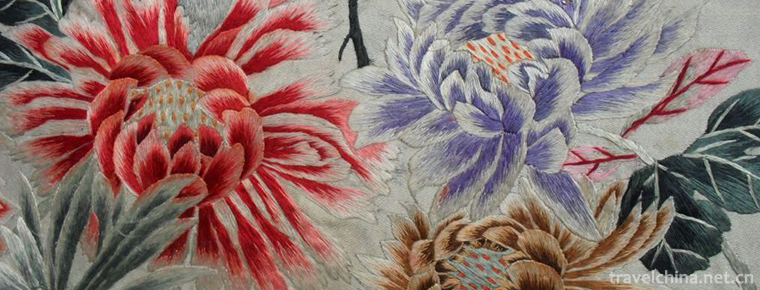
-
Taierzhuang Ancient Town
Taierzhuang Ancient City, located at the center of the Beijing-Hangzhou Grand Canal, is located at the junction of Taierzhuang District, Zaozhuang City, Shandong Province.
Views: 115 Time 2018-12-08 -
Caoxi Hot Spring Holiday Resort
Caoxi Hot Spring Holiday Resort is located in Qujiang Maba, Shaoguan City. It is the largest hot spring villa resort in Guangdong Province. It is located on 106 National Highway under the outlet of Sh.
Views: 334 Time 2019-01-04 -
Mao Zedongs former Residence
Comrade Mao Zedong's former residence is located in Shaoshan Village, Shaoshan Township, Shaoshan City, Hunan Province. It is located in the South and north of Shaoshan Village.
Views: 155 Time 2019-02-07 -
maoming forest park
Maoming Forest Park is located in the western suburb of Maoming City, Guangdong Province. It is only 12 kilometers away from the urban area and covers an area of more than 4500 mu.
Views: 185 Time 2019-02-07 -
Eight Immortals Crossing the Sea Make Arhats
Eight Immortals Crossing the Sea and Arhat is a famous dish, which belongs to Confucian cuisine. Various raw materials, rich and fresh soup, beautiful color, such as eight immortals and Luohan.
Views: 263 Time 2019-03-27 -
Jinhua Taoism
Jinhua Daoqing is also known as singing news and persuading Shiwen. It is a traditional rap art in Zhejiang Province. It combines with Hangzhou gongshu, Wenzhou drum lyrics, Ningbo .
Views: 255 Time 2019-05-06 -
Li nationality costumes
Li costumes are mainly made of island cotton, hemp, kapok, bark fiber and silk. In ancient times, some places also used the bark of twig or bloody throat trees as clothing materials. This kind of dres.
Views: 129 Time 2019-05-12 -
Mongolian Long tune Folk Songs
Mongolian long-tune Mongolian is called "Uri Tudao", which means long song. It is characterized by fewer words, long-lasting, soothing and free, suitable for narration, and longer lyric. .
Views: 194 Time 2019-06-04 -
Hunan embroidery
Hunan embroidery is one of the four famous embroidery in China. It is the general name of Hunan embroidery products with distinctive Hunan-Chu cultural characteristics centered in Changsha, Hunan Prov.
Views: 299 Time 2019-07-06 -
Xiangyuan Drum Book
Xiangyuan Drum Book is a traditional opera in Shanxi Province. Originated in Xiangyuan, Shanxi Province, it is popular in Shangdang area. It is also called Guer Ci and Xiangyuan Tune. According to leg.
Views: 251 Time 2019-07-06 -
Cheongsam Qipao anecdotes
Helen foster snow is the widow of snow, the author of a journey to the West. This book records his meeting with Mao Zedong in Yan'an cave dwelling period. Helen was only 23 when she first went to Shanghai in 1931. Helen's good friend Polly went all over the United States to.
Views: 158 Time 2020-12-11 -
Guangan science and technology
In 2019, 16 new high-tech enterprises will be cultivated in Guang'an City, 107 of which will be put on record by the Ministry of science and technology. One provincial high-tech industrial park, one provincial engineering technology research center and two.
Views: 345 Time 2020-12-19
